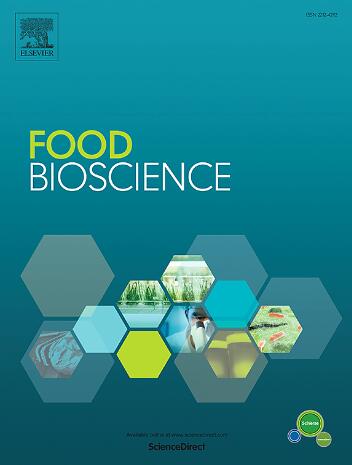Development of a bilayer starch/chitosan film for food packaging applications
IF 5.9
1区 农林科学
Q1 FOOD SCIENCE & TECHNOLOGY
引用次数: 0
Abstract
Food packaging plays a crucial role in preserving food quality throughout distribution. This study developed a starch/chitosan bilayer as a bio-packaging material. Compared to previous studies, the characterization of film-forming dispersions has been significantly improved, demonstrating their suitability for producing high-quality bilayer films. After preparing and characterizing the starch and chitosan dispersions and the resulting films, the bilayer was obtained by depositing the chitosan dispersion onto a pre-formed starch film. The bilayer was analyzed using microscopy, contact angle measurements, Fourier Transform Infrared Spectroscopy, tensile strength tests, thermogravimetric analysis, gas permeability assessments, total solids, and solubility tests. Results show the bilayer possesses mechanical and physical properties comparable to commercial plastics, even after refrigerated or frozen storage. Notably, it exhibited high hydrophobicity, with a contact angle of 100°, and good thermal stability, with only 10 % mass loss up to 200 °C, making it suitable for domestic oven use. Additionally, the bilayer is entirely impermeable to carbon dioxide at atmospheric pressure and shows a permeability of 15.16 barrer under a transmembrane pressure of 5 bar, contributing to extended food shelf life. It also remains insoluble in water for at least 24 h at room temperature and resists acidic and alkaline environments, maintaining integrity with wet or reactive foods. These findings suggest that the starch/chitosan bilayer could be a viable, eco-sustainable alternative to conventional plastics, offering promising applications in the food sector. This study contributes to the advancement of sustainable food packaging through the development of a durable, environmentally friendly bilayer material with industrial potential.

食品包装用淀粉/壳聚糖双层膜的研制
食品包装在整个分销过程中对保持食品质量起着至关重要的作用。本研究开发了淀粉/壳聚糖双分子层作为生物包装材料。与以往的研究相比,成膜分散体的表征得到了显著改善,证明了其适合于生产高质量的双层膜。在制备和表征了淀粉和壳聚糖分散体及其膜后,将壳聚糖分散体沉积在预成型的淀粉膜上,得到了双分子层。使用显微镜、接触角测量、傅里叶变换红外光谱、拉伸强度测试、热重分析、气体渗透性评估、总固体和溶解度测试对双层进行了分析。结果表明,即使经过冷藏或冷冻储存,双分子层具有与商用塑料相当的机械和物理性能。值得注意的是,它具有高疏水性,接触角为100°,热稳定性好,高达200°C时质量损失仅为10%,适合家用烤箱使用。此外,双分子层在大气压下完全不渗透二氧化碳,在5 bar的跨膜压力下渗透性为15.16 bar,有助于延长食品的保质期。它在室温下至少24小时不溶于水,耐酸性和碱性环境,与潮湿或反应性食品保持完整性。这些发现表明,淀粉/壳聚糖双分子层可能是一种可行的、生态可持续的传统塑料替代品,在食品领域有很好的应用前景。本研究通过开发具有工业潜力的耐用、环保的双层材料,促进了可持续食品包装的发展。
本文章由计算机程序翻译,如有差异,请以英文原文为准。
求助全文
约1分钟内获得全文
求助全文
来源期刊

Food Bioscience
Biochemistry, Genetics and Molecular Biology-Biochemistry
CiteScore
6.40
自引率
5.80%
发文量
671
审稿时长
27 days
期刊介绍:
Food Bioscience is a peer-reviewed journal that aims to provide a forum for recent developments in the field of bio-related food research. The journal focuses on both fundamental and applied research worldwide, with special attention to ethnic and cultural aspects of food bioresearch.
 求助内容:
求助内容: 应助结果提醒方式:
应助结果提醒方式:


